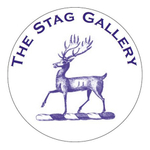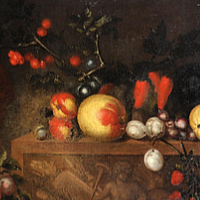c.1600 Century Italian Old Master Oil Painting Old Man & Courtesan Woman
About Auction
May 11, 2022 - May 22, 2022
A finely curated auction of European fine art, presenting original paintings from the 17th century right through to the latter part of the 20th century: Old Masters, Portraits, Marines, Landscapes, Sporting Art.... Stag Gallery Auctions staggallerycollections@gmail.com
- Lot Description
The Old Man and Courtesan Italian School, circa 1600 circle of Agostino Carracci (Italian, 1557-1602) oil painting on canvas, framed canvas: 60cm x 50cm framed: 71cm x 60cm provenance: private collection, France Very fine quality Italian Old Master oil painting on canvas, dating to circa 1600. The work is very close in every respect to the works by Agostino Carracci (1557-1602) and is loosely based on a known work by Carracci of a similar subject, though with obvious differences to the composition. Dating to within Carracci's life, the painting is possibly a studio work by a pupil or a close member of the artists circle. Agostino Carracci was born in Bologna as the son of a tailor. He was the elder brother of Annibale Carracci and the cousin of Ludovico Carracci. He initially trained as a goldsmith. He later studied painting, first with Prospero Fontana, who had been Lodovico's master, and later with Bartolomeo Passarotti. He traveled to Parma to study the works of Correggio. Accompanied by his brother Annibale, he spent a long time in Venice, where he trained as an engraver under the renowned Cornelis Cort. Starting from 1574 he worked as a reproductive engraver, copying works of 16th century masters such as Federico Barocci, Tintoretto, Antonio Campi, Veronese and Correggio. He also produced some original prints, including two etchings. He traveled to Venice (1582, 1587–1589) and Parma (1586–1587). Together with Annibale and Ludovico he worked in Bologna on the fresco cycles in Palazzo Fava (Histories of Jason and Medea, 1584) and Palazzo Magnani (Histories of Romulus, 1590–1592). In 1592 he also painted the Communion of St. Jerome, now in the Pinacoteca di Bologna and considered his masterwork. In 1620, Giovanni Lanfranco, a pupil of the Carracci, famously accused another Carracci student, Domenichino, of plagiarizing this painting. From 1586 is his altarpiece of the Madonna with Child and Saints, in the National Gallery of Parma. In 1598 Carracci joined his brother Annibale in Rome, to collaborate on the decoration of the Gallery in Palazzo Farnese. From 1598–1600 is a triple Portrait, now in Naples, an example of genre painting. In 1600 he was called to Parma by Duke Ranuccio I Farnese to begin the decoration of the Palazzo del Giardino, but he died before it was finished. Agostino's son Antonio Carracci was also a painter, and attempted to compete with his father's Academy. An engraving by Agostino Carraci after the painting Love in the Golden Age by the 16th-century Flemish painter Paolo Fiammingo was the inspiration for Matisse's Le bonheur de vivre (Joy of Life). Condition report: The canvas has a very old reline to it and is, for its considerable, in very presentable condition.
Dimension
Height: 71.00Width: 60.00 - Shipping Info
-
We have our own in house professional packing and shipping department - and can ship any painting worldwide for very reasonable rates. Please feel free to ask any questions you may have regarding the process. We mainly use Fedex and all parcels come with full online tracking. A signature is required for the parcel on delivery. Transit insurance to cover loss or theft is available, please ask for a quote. Due to the fragile nature of old frames, our shippers do not provide compensation for any damage caused during transit. By placing your bids, you accept and acknowledge that we cannot compensate or refund, under any circumstances, for any damage occurring to frames during transit. Transit time from the UK to American is around 2-3 working days. Thank you.
-
- Payment & Auction Policies
-
Available payment options
-
- Buyer's Premium



 EUR
EUR CAD
CAD AUD
AUD GBP
GBP MXN
MXN HKD
HKD CNY
CNY MYR
MYR SEK
SEK SGD
SGD CHF
CHF THB
THB















